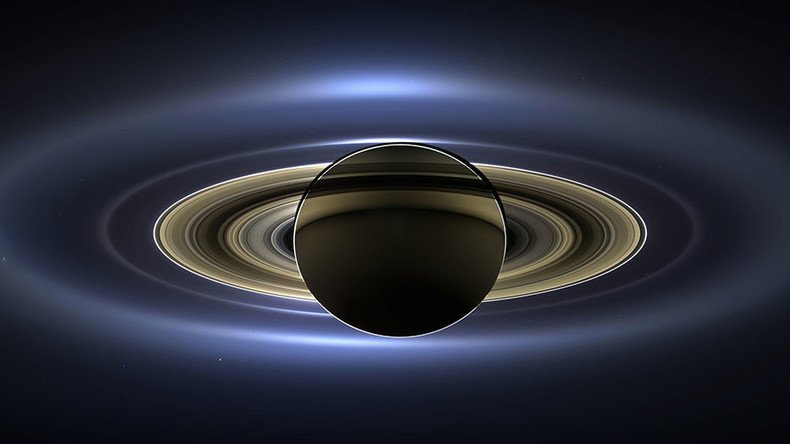Collapsing Mars moons could form rings, research claims

New research suggests that Mars has begun building Saturn-like rings using the destroyed fragments of two of its moons.
In a new paper published in the journal Icarus, researchers from the Physical Research Laboratory in India put forward the idea that some of the dust that surrounds Mars may one day accumulate into a set of rings encircling the Red Planet.
Astronomers have long speculated that Mars will one day be encircled by rings made of bits of rock from its two moons, Phobos and Deimos, similar to how Saturn is now.
This is because the two moons are being gradually chipped away as they are drawn closer to the planet by its gravity. However, the new research demonstrates that the process is already under way and within a mere 20 to 70 million years the Red Planet could have a pair of rings of its own.
READ MORE: NASA to reveal new discovery 'from beyond our solar system' (POLL)
Studying data sent back from NASA's Mars Atmosphere and Volatile Evolution (MAVEN), which spotted a cloud of high-altitude dust surrounding the planet in 2013, the scientists found possible evidence of the development of rings around the planet and data that suggests that at least some of the dust encircling the planet came from the moons.
Researchers argue that larger particles are being joining the proto-rings while smaller particles are typically being swept away by the solar wind. They found that about 0.6 per cent of the dust cloud could be coming from Phobos and Deimos.
READ MORE: High 5: NASA picks new technology to test for future space exploration
The researchers note that the presence of moon particles in the atmospheric cloud is not guaranteed evidence of ring development, but rather it suggests that it is possible.
“To really say anything definitive about the dust, you really need to have a dedicated dust detector,” Laila Anderssen, one of the researchers from the University of Colorado Boulder, told New Scientist. “We still haven’t seen a good indication that there is significant material in the vicinity of the moons. So, I think it’s a long shot... but one should never say never.”












